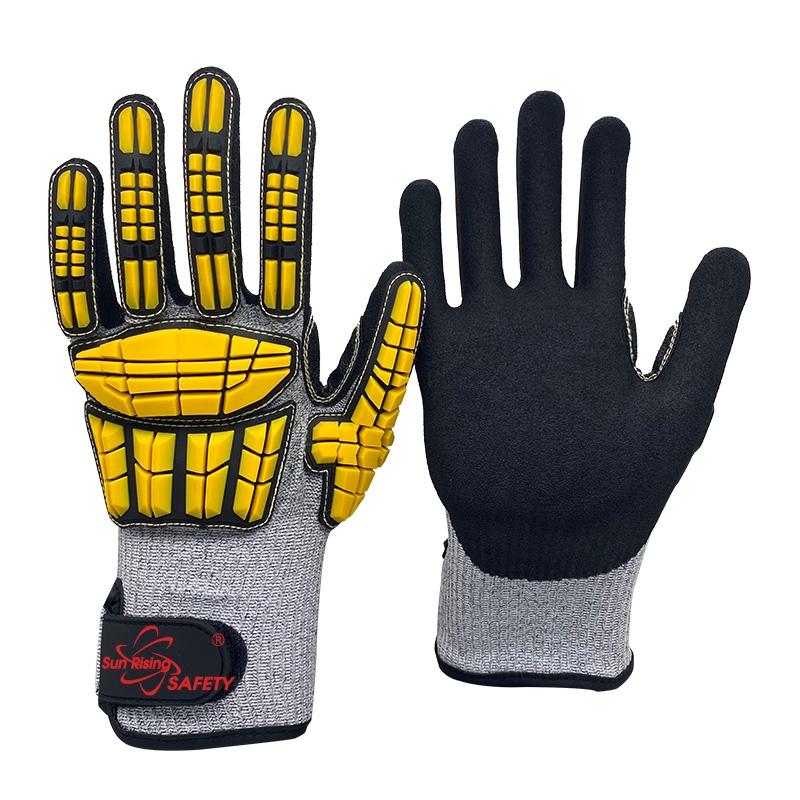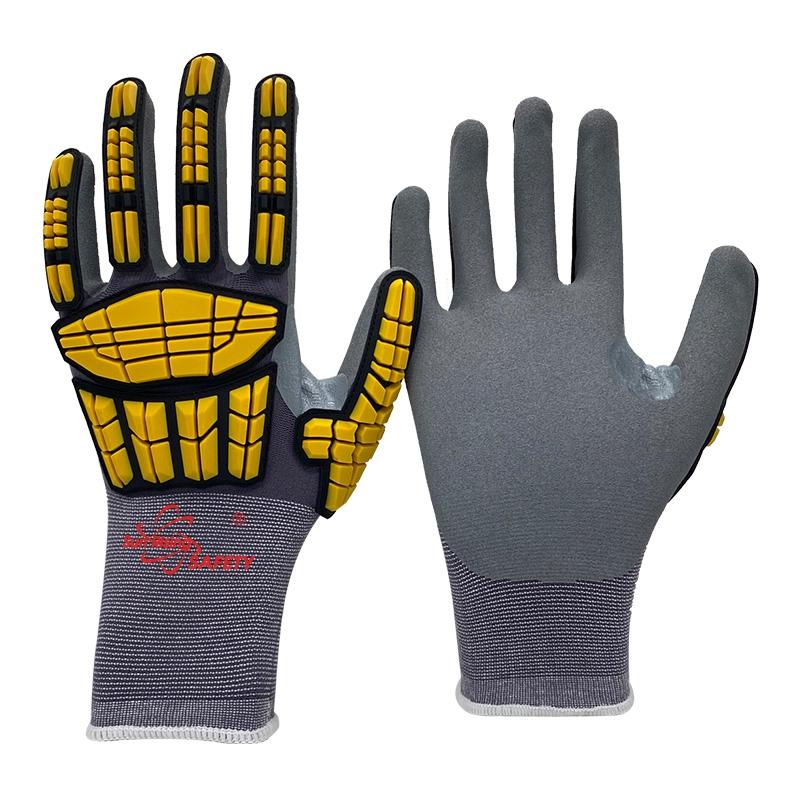Subscribe for NMSafety News
What Anti Impact Glove Should You Choose for Safety?
By hqt

An Anti Impact Glove protects hands from knocks, cuts, and slips. It uses padded guards on the back to absorb hits. A tough knit blocks sharp edges. A grippy palm holds tools in wet or oily work. You’ll see it in automotive, construction, oil and gas, glass handling, steel mills, and forestry. It keeps teams confident and fast on the job. Yet not all gloves work the same. Tasks, hazards, and comfort needs differ. Choose wrong, and risks rise. Choose right, and injuries drop. Which features matter most – and when? Let’s break it down next.

Why Choosing The Right Anti Impact Glove Matters
In high-risk work, hand injuries are frequent, costly, and avoidable. The right Anti Impact Glove should control three things at once: impact, cut, and grip. Impact protection comes from TPR (thermoplastic rubber) on the back of the hand that absorbs and spreads force so knuckles and metacarpals take fewer hits. Cut resistance comes from engineered yarns – HPPE blended with glass or steel fibers – that stop sharp edges from slicing through when you handle stamped metal, glass sheets, or cut pipe. Grip and durability come from a sandy nitrile palm that bites onto wet or oily surfaces without tearing down fast. If a glove misses any one of these, your people will feel it: bruised knuckles, torn liners, or tools dropped at the worst time.

SRSafety builds Anti Impact Glove solutions around those pain points. Our 13-gauge nylon liners balance durability with flex, while the addition of HPPE plus glass or steel fiber lifts cut resistance into ANSI A3 – A7 and beyond (ISO 13997 C – F). For lighter, all-day tasks, our 15-gauge nylon/spandex blend brings easy movement with dependable impact protection. Across the range, sewn TPR keeps flexibility high and coverage consistent, anti-vibration padding reduces fatigue, and reinforced thumb-index zones guard the most abused seam on the glove.
How SRSafety Matches Jobs To Protection Levels
- Wet & Oily Work: Keep Your Grip, Keep Your Pace
If your line runs with coolants, oils, or hydraulic fluid, grip is safety. Our sandy nitrile palm delivers a textured surface that maintains hold even when the part is slick. Pair it with a 13-gauge nylon + HPPE + glass fiber liner to resist cuts from sheet edges while keeping the glove light and responsive. For tasks with frequent tool handling, anti-vibration padding on the palm dampens buzz and reduces end-of-shift hand fatigue, so productivity stays steady.
• Sandy nitrile for durable wet/oily grip
• A3 – A7 (ISO C – F) cut options for varied edge risks
• Sewn TPR that flexes with the hand, not against it

- High Cut Risk & Heavy Strikes: Maximum Confidence
Fabrication, steel handling, and demolition call for higher cut numbers and tougher impact performance. Our nylon + HPPE + steel fiber constructions reach ANSI A6 – A9 (ISO D – F) while maintaining a close fit. Pair that with ANSI/ISEA 138 impact level 2 TPR on the back of hand to help absorb the heavier blows common around beams, castings, and rigging.
• ANSI A6 – A9 cut options for aggressive edges
• Impact level 2 back-of-hand protection where hits happen
• Reinforced thumb crotch for extra longevity at the wear hotspot
- All-Day Comfort And Dexterity: Don’t Fight The Glove
For assembly, fasteners, and instrument work, stiffness slows you down. A 15-gauge nylon/spandex liner molds to the hand, stays breathable, and still carries impact protection (ANSI/ISEA 138 level 1) for bumps and glancing blows. You get the movement you need without sacrificing basic safety, plus the same sandy nitrile palm to keep parts secure.
• 15-gauge comfort for precision tasks
• Reliable impact level 1 for everyday knocks
• Velcro wrist for a secure, adjustable fit

What To Check Before You Buy
Most Anti Impact Glove decisions fail because buyers focus on one metric. Instead, check the full picture:
• Standards That Match Your Risk
Look for ANSI/ISEA 138 impact levels (1 – 2 in our range) and ANSI/ISO cut ratings (A3 – A9; ISO C – F). Pick by the sharpest edge you actually handle, not the average task.
• Liner That Balances Feel And Shield
13-gauge nylon + HPPE + glass or steel fiber gives strong cut resistance with good dexterity. 15-gauge nylon/spandex maximizes comfort for fine work.
• Palm That Works Where You Work
Sandy nitrile excels in wet and oily conditions and stands up to abrasion. It helps keep parts in hand and reduces drop risk.
• Impact Coverage That Bends, Not Binds
Sewn TPR should articulate over knuckles and fingers so you can curl, grip, and climb without hotspots.
• Vibration And Fatigue Control
Anti-vibration padding on the palm supports tool users and lowers strain over long shifts.
• Reinforcement Where Gloves Fail First
A protected thumb-index “web” extends glove life in tight, repetitive grips.
• Fit That Stays Put
A snug, adjustable wrist (Velcro) keeps debris out and the glove seated when you sweat or reach overhead.
• Industry Fit And Customization
Automotive, construction, forestry, glass, oil, and steel all face different risks. We tailor cut levels, impact layouts, and branding to your workflow.
At SRSafety, we design Anti Impact Glove solutions to remove the usual trade-offs – so your team doesn’t choose between safety and speed. If you’re unsure which configuration is right, tell us your typical hazards, materials handled, and whether your line runs wet or dry. We’ll recommend a cut range, liner gauge, and impact level that match the job, not just the brochure.
Call To Action
Ready to reduce hand injuries and boost comfort? Talk to SRSafety today for a fast, tailored Anti Impact Glove recommendation and samples for on-site trials. Protect hands. Protect uptime.
